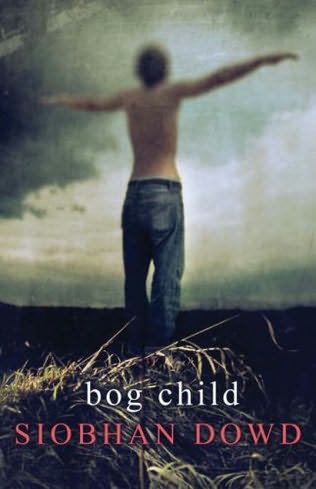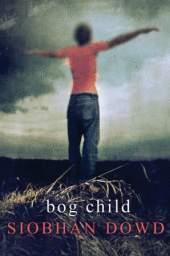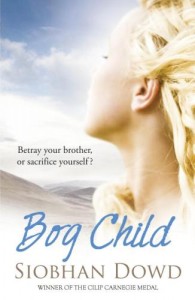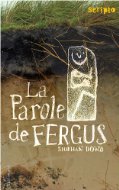 This book had been on my radar for a long time, but hadn’t been available in our local library. Now I know why.
This book had been on my radar for a long time, but hadn’t been available in our local library. Now I know why.
Eighteen-year-old Fergus is living through “The Troubles” in Northern Ireland. His older brother is in a British prison for being involved with the IRA, and while he plans to go to college in Scotland, he can’t help but feel loyalty to his brother, his family, and his nation. Despite his sympathies, he has no intention of getting involved with the political struggles going on around him.
When his brother joins the hunger strikers, his family is nearly torn apart. Will he sacrifice himself to save his brother, his family, and his country?
Response
As I read this book, I was struck by the theme of Celtic unity which runs through the book, particularly as it is evoked by the character of Owain. In fact, the theme of the unity of humanity is strung throughout this book, but it is so well done it never becomes preachy. Sometimes you read a book where the theme is so overbearing it becomes a message (think Go Ask Alice and any number of similar titles) and it becomes difficult to enjoy. This book is a model of how to effectively incorporate a theme without ever letting it overshadow your characters and their stories.
Early in the book, Fergus and his uncle are somewhere they aren’t supposed to be, and they discover a body buried in the peat. While the police initially believe it to be a murder, it turns out to be body of a young girl that had been buried nearly 2000 years ago with a noose around its neck; its body preserved by the acid content of the peat. This young girl, christened “Mel,” visits Fergus in his dreams, telling her story to him. As the archeologist and her daughter discover more about Mel, these new findings are incorporated into Fergus’s dreams. This is the strangest part of the book and I still don’t really understand it. That’s not a problem, though—that’s what rereads are all about.
I could go on and on about this book, but I’m going to do something that’s fairly rare for me and shut up. That’s because I really want you to enjoy this complicated, fascinating book, and I don’t want to even risk giving up anything that might ruin it for you. So just go get this book, read it, and then comment on this post. You won’t be dissappointed.
I am working on a glossary for this book, however, since it includes a lot of vocabulary that might be difficult for readers in the United States.
Epilogue
Sadly, this is Dowd’s last book. It was published posthumously in 2008, after she died of breast cancer in 2007. You can read her obituary in the Guardian.
Before dying, she set up a trust to ensure that her future royalties would be used to bring books to disadvantaged young people in the UK.
Other Covers
One thing I love about the internet is that it is relatively easy to find other cover designs. Most people don’t realize that one book may have many different covers, often within their own
 This cover is exactly like the one above, except that the boy’s torso is colored over. I’m not sure what that is supposed to represent.
This cover is exactly like the one above, except that the boy’s torso is colored over. I’m not sure what that is supposed to represent.
 This cover emphasizes the girl, Mel.
This cover emphasizes the girl, Mel.
 This is the French cover. The French title literally translates as “Fergus’s Word.”
This is the French cover. The French title literally translates as “Fergus’s Word.”
 This is the German cover. I’m not entirely sure, but I think the German title literally tranlates as “Beginning and end of all sorrow is this place,” which echoes Fergus’s last words to Owain: “This place, Owain. It’s the beginning and end of all sorrows” (310).
This is the German cover. I’m not entirely sure, but I think the German title literally tranlates as “Beginning and end of all sorrow is this place,” which echoes Fergus’s last words to Owain: “This place, Owain. It’s the beginning and end of all sorrows” (310).
 I’m not quite sure, but I think this is the Korean cover. (If it’s not, let me know and I’ll delete it—but definitely let me know what book this is.)
I’m not quite sure, but I think this is the Korean cover. (If it’s not, let me know and I’ll delete it—but definitely let me know what book this is.)
Dowd, Siobhan. Bog Child. New Work: Random House, 2008.
https://bookblog.kjodle.net/2011/06/11/bog-child-siobhan-dowd/
